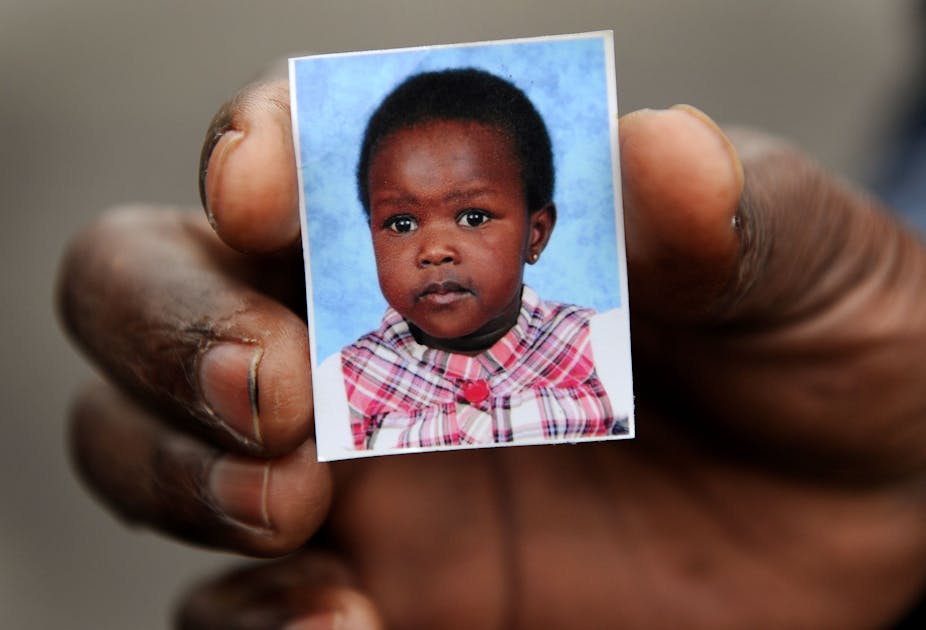The recent death of four year-old, Ayen Chol from a pit bull attack has again prompted calls to ban the breed.
But instead of focusing on a particular breed, or responding to single events as they occur, and reacting emotively, we need to systematically examine all of the circumstances surrounding dog bite incidents. We need better data and reporting, and better education for parents, dog owners and the general public on how best to avoid a dog bite incident.
How many dog attacks are there?
The full extent of dog bite injury in Australia is difficult to measure as there are no reporting requirements.
There are data available on deaths. Hospital-treated dog bite injury is available through emergency department presentation data and hospital admissions data. But comprehensive data on medical practitioner treated injury and non-medically treated injury are not available.
Until the recent tragic death of Ayen Chol, no dog bite related deaths in Victoria have been attributed to a dog identified as a pit bull or pit bull cross.
My ongoing research has found that since 1979, there have been over 33 dog bite related deaths in Australia, 11 of these in Victoria. Only one other dog involved in a death in Australia has previously been described as a pit bull cross dog.
Pit Bull confusion
In Australia, the word “pit bull” has loosely been used to describe purebred American Pit Bull Terriers or crosses. In other parts of the world, it is more often used as a generalised description to describe a type of dog, such as one might use the terms gundog or spaniel.
In the United States, the term is used to describe the American Pit Bull Terrier, American Staffordshire Terrier, English Bull Terrier, English Staffordshire Bull Terrier, Bulldogs, crosses of them and any dog that looks anything like any of those breeds.
The owners of Staffordshire Bull Terriers in Australia may be surprised to hear that their breed is banned in many parts of the world.

More information needed
Within Australia there are no reliable statistics available on the breed of dogs involved in attacks mainly because breed identification based on the appearance of a dog is likely to be inaccurate, even when experienced observers are involved.
It is also possible that a dog may look like a pit bull type dog when it is not. Even if breed identification was reliable, accurate breed denominator data are not available to allow estimation of breed-specific bite injury rates.
There is no scientifically sound evidence to suggest that the targeted breeds feature disproportionally in dog bite injury statistics.
Breed confusion would make a ban difficult
If you cannot reliably identify a dog’s breed background (and cross breed dogs add a further dimension), laws targeting breeds will never work, regardless of whether you think the original justification is valid.
The issue of breed identification in dog attacks is further complicated, and errors potentially increased, by reliance on media reports for breed identification.
Selective and sensationalistic reporting by the media may also misrepresent the role of breed in dog bite injury, as well as potentially encouraging irresponsible ownership. This frames the issue as a breed problem when, in fact, it isn’t a breed problem but a human problem.
It is also possible that case detection bias exists with victims of some breeds more likely to report bite incidents. This may result in spurious association between biting and those breeds. Some biting dogs are misidentified as being of a particular breed or type because “they are the ones that bite”.
Protecting children
Knee-jerk reactions by governments do not tend to create good public policy. We do not need any more laws or restrictions that are doomed to failure from the onset. We need a strategy based on the best research evidence that we have to hand.
Breed bans simply do not address other recurrent patterns associated with dog attacks such as irresponsible or uneducated dog ownership.
Measures taken need to address human ownership practices, as dogs of many breeds and crosses feature in dog attacks. No single, or even group of breeds, have been shown to account for the majority of dog attacks in Australia.
The best way to prevent children being injured is to have approach that considers all possible factors, as is the case with almost every other injury issue.
This approach should include strategies targeted towards the general public, dog owners, parents and dogs. Enforcement of existing control and leash laws and education and knowledge will help. It is important children are supervised with dogs. These essential measures will enhance responsible ownership of any breed or cross breed.

